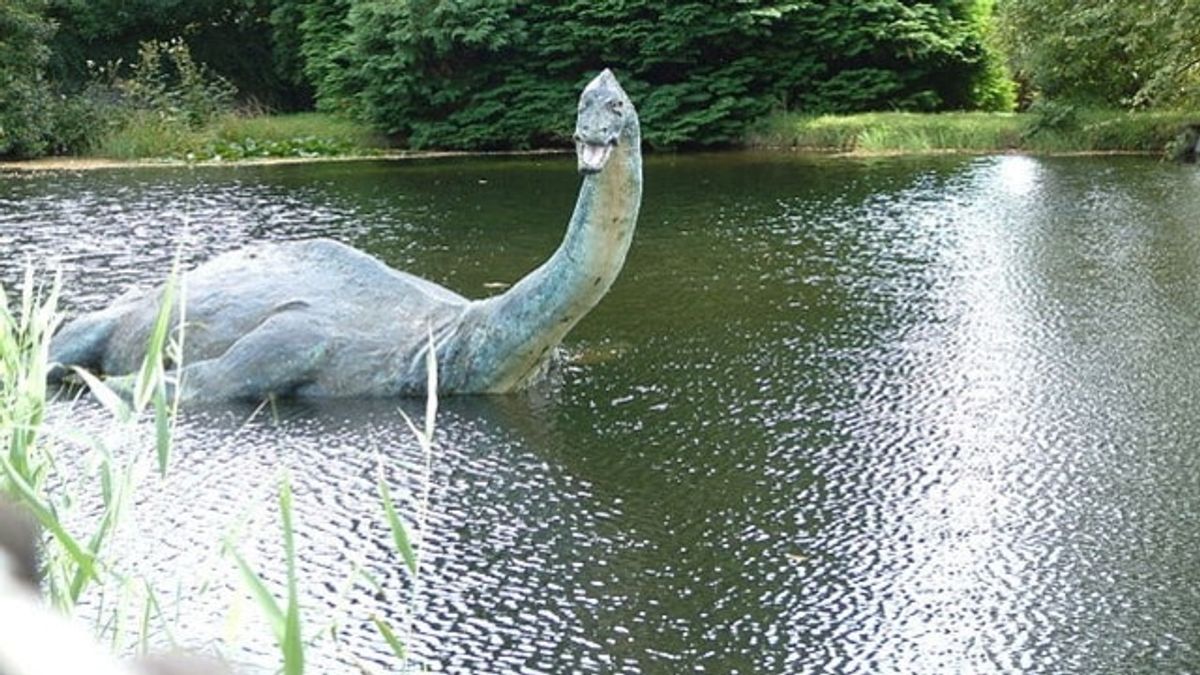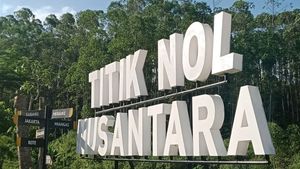
JAKARTA - On October 11, 1987, a massive expedition to search for the Loch Ness monster in Scotland was stopped. The expedition team failed to find the monster and spent three days at Loch Ness Lake using equipment to scan the lake.
Citing the BBC, as many as 24 ships were deployed to search for the Loch Ness monster or also called Nessie. One of the ships claims to have three sonar "contacts". The sonar also showed great movement in the waters below Urquhart Castle but this could have been the movement of a group of salmon.
The expedition leader, Adrian Shine, was a serious man with an intense cold gaze and a bushy beard. He actually doesn't believe in Nessie's existence, but believes in a bigger, more scientific being. As a scientist working for a printing company, he spent most of his 15 years of free time gazing at the peaty Loch Ness Lake and other nearby lakes, looking for ways to explain the mysterious phenomenon.
His first findings echoed his explorations in 1982, where sonar sweeps were less intense and made deepwater contact. Such creatures, he said, could be explained by known natural phenomena. "There's no reason why there isn't something at the top of the food chain here," he said.
Many people do not believe in Nessie. But there's no denying that there's something in Loch Ness Lake, it could be a seal entering the lake or a big eel. Those who believe in Nessie explain that the creature's family could have been trapped in the lake when the prehistoric sea receded.

The Legend of Loch Ness
The Loch Ness Monster was first mentioned by St. Columba, a missionary who spread Christian doctrine in the north of Scotland. Hundreds of people claim to have seen Nessie since then, including many residents along Loch Ness Lake. Most people describe Nessie as a plesiosaur, a predatory reptile with a long neck and four flippers. The plesiosaurs became extinct about 65.5 million years ago.
Quoting Britannica, the legend of the Loch Ness monster began to develop in 1933. At that time the road adjacent to Loch Ness Lake had just been completed, providing an unobstructed view of the lake. In April 1933, a husband and wife saw a very large animal. After they crossed the car lane, the animal disappeared into the water. The incident was reported in a Scottish newspaper and many other sightings followed.
In December 1933, the Daily Mail commissioned Marmaduke Wetherell, a great hunter, to find a creature they called a sea serpent. Along the shores of Loch Ness Lake, he found large footprints that he believed belonged to “a very strong soft-footed beast about 6 meters long.” However, upon closer inspection, zoologists at the Natural History Museum said the trail was man-made.

Over the years several sonar explorations were carried out, most notably in 1987 to 2003. Explorations were carried out to find the creature, but none were successful. Indeed, many photos allegedly show Nessie, but most of them are fake or upon investigation, they turn out to be animals or other objects.
In 2018, researchers conducted a Loch Ness DNA survey to find out what organisms live in these waters. No signs of plesiosaurs or large animals were found, although the results showed the presence of many eels in the lake.
This finding opens the possibility that the monster is a large eel. Despite very little conclusive evidence, Nessie remains popular and brings benefits to Scotland. At the beginning of the 21st century, the search for Nessie was estimated to contribute nearly 80 million US dollars per year to the Scottish economy.
*Read other information about TODAY's HISTORY or read other interesting articles from Putri Ainur Islam.
Other TODAY'S HISTORY
SEE ALSO:
The English, Chinese, Japanese, Arabic, and French versions are automatically generated by the AI. So there may still be inaccuracies in translating, please always see Indonesian as our main language. (system supported by DigitalSiber.id)
















